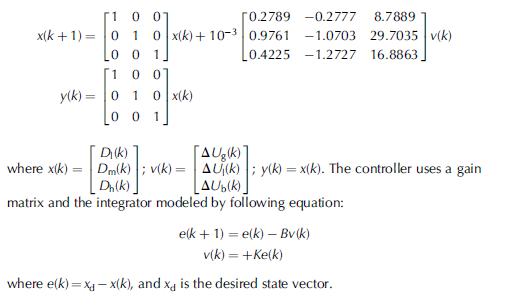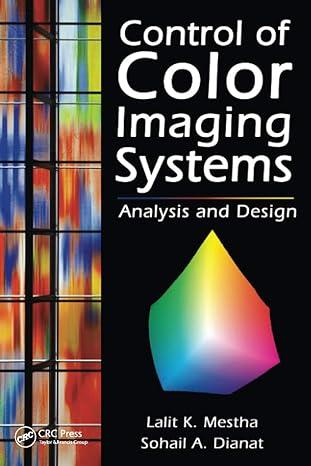The cost of the electrostatic sensing system can be reduced by removing the charge sensor (ESV) and
Question:
The cost of the electrostatic sensing system can be reduced by removing the charge sensor (ESV) and associated level 1 control loop. It is now required to design a three-input three-output developability control loop using three process actuators, the grid voltage, Ug(k)¼Vg(k), the exposure intensity, Ul(k)¼X(k), the development bias, Ub(k)¼Vbias(k), and measurements from the DMA sensor. Let Dl(k), Dm(k), and Dh(k) represent the three different DMA measurements shown in the state vector, x(k), measured every pitch, indicated by the parameter, k. The linear state variable description of the control system is characterized by the Jacobian matrix at the nominal operating point {Ugo¼600 V, Ulo¼8 erg=cm2, Ubo¼300 V} as shown below:

i. Find the gain matrix for placing the poles at location [0.3, 0.3, 0.3] using Equation 9.45.
ii. Show the time evolution of the states for a step response as a function of pitch number using recursive solution of equation (Section 4.8.3), the measurement-
actuation updates are executed at every pitch.
iii. Compare the results of step ii by running the control simulation with the charge and development models from Chapter 10.
iv. Are there other reasons why this type of control approach is more suitable than level 1 and 2 architecture? Justify your answers
Step by Step Answer:

Control Of Color Imaging Systems Analysis And Design
ISBN: 9781138112278
1st Edition
Authors: Lalit K. Mestha






